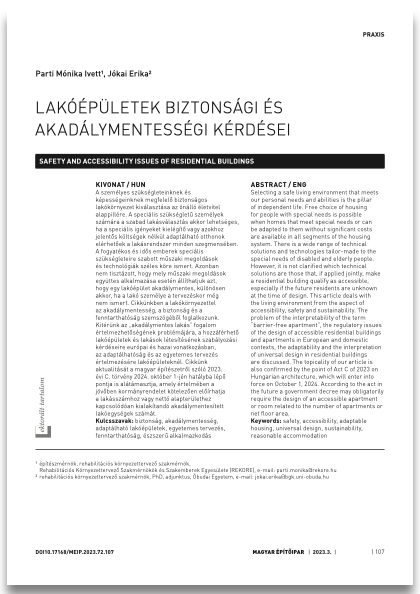SAFETY AND ACCESSIBILITY ISSUES OF RESIDENTIAL BUILDINGS
DOI:
https://doi.org/10.17168/MEIP.2023.72.107Keywords:
safety, accessibility, adaptable, housing, universal design, sustainability, reasonable accommodationAbstract
Selecting a safe living environment that meets our personal needs and abilities is the pillar of independent life. Free choice of housing for people with special needs is possible when homes that meet special needs or can be adapted to them without significant costs are available in all segments of the housing system. There is a wide range of technical solutions and technologies tailor-made to the special needs of disabled and elderly people. However, it is not clarified which technical solutions are those that, if applied jointly, make a residential building qualify as accessible, especially if the future residents are unknown at the time of design. This article deals with the living environment from the aspect of accessibility, safety and sustainability. The problem of the interpretability of the term “barrier-free apartment”, the regulatory issues of the design of accessible residential buildings and apartments in European and domestic contexts, the adaptability and the interpretation of universal design in residential buildings are discussed. The topicality of our article is also confirmed by the point of Act C of 2023 on Hungarian architecture, which will enter into force on October 1, 2024. According to the act in the future a government decree may obligatorily require the design of an accessible apartment or room related to the number of apartments or net floor area.


